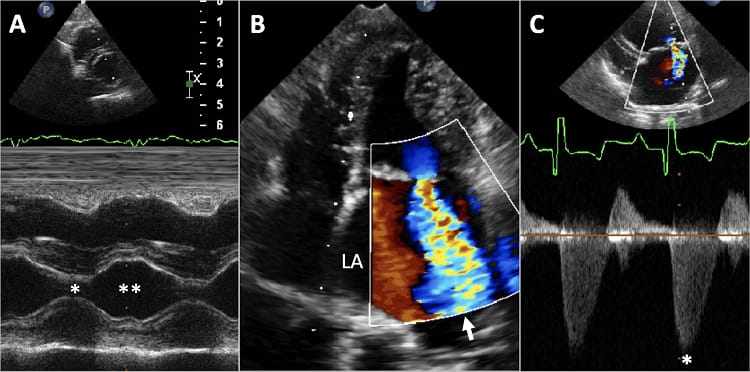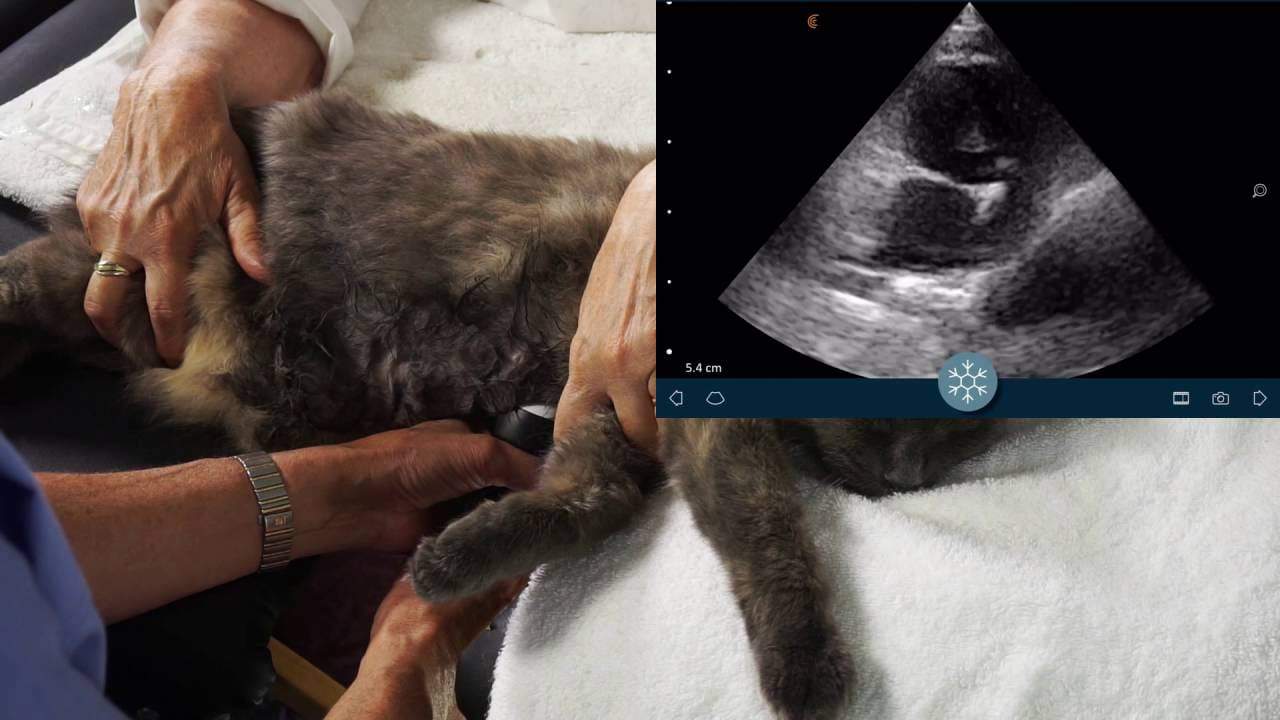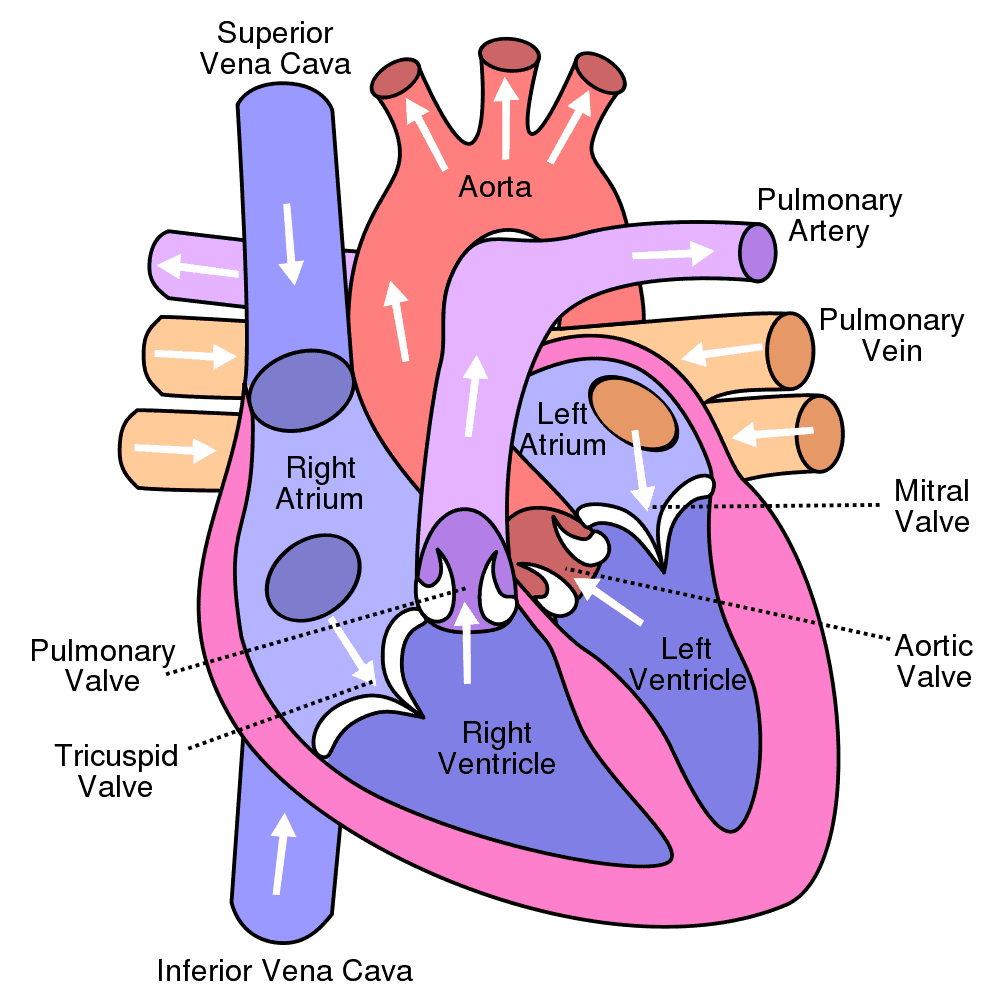What is an echocardiogram?
An echocardiogram, also known as an echo or cardiac ultrasound, is a diagnostic tool for looking closely at the heart as well as inside and around it. An echo uses high-frequency sound waves to create live images, allowing veterinarians to get an idea of what the heart looks like and how it is functioning in real-time.
This provides information about the size, shape, and function of the heart, its four chambers, the heart valves, and surrounding structures, such as the pericardial sac.

Color Doppler will also be used to assess how blood is flowing through the heart, as well as how blood enters and exits the heart.
Can my regular vet do an echocardiogram?
An echo is a little bit different from a general ultrasound because it requires a great deal of knowledge and training to perform, is more technically difficult, and sometimes requires specialized equipment such as cardiac transducers. This form of imaging is tightly focused on the heart. Other organs, such as those in the belly, are not examined with an echo.
In addition to assessing for obvious abnormalities (e.g. masses in and around the heart, fluid in the pericardial sac), measurements of individual heart wall thickness, chamber size, and blood flow are taken. Calculations are done to determine how well the heart is functioning based on these measurements. As such, many general practice veterinarians will refer pets to veterinary cardiologists for echocardiograms rather than perform the procedure themselves.
What is the procedure?
Echocardiograms are typically done with the pet lying on a table. A transducer or probe is held against the skin overlying the heart. The transducer sends sound waves to the heart, which are translated to images on a screen. Hair does not conduct sound waves very well, so the pet is usually shaved prior to the procedure.
Alcohol or ultrasound gel may be used on the skin to provide better conduction. Ribs do not conduct sound waves well either, so the transducer is often placed in many strategic areas on the skin between the ribs to get an accurate view of the entire heart.
Echocardiograms are typically painless and often done in a quiet, dark room. Most pets are able to lie comfortably without stress and minimal restraint. Rarely do pets need sedation. Almost all pets can safely undergo echo, but your veterinarian will be the best judge of this.
Why would my pet need this procedure?

If your pet was recently diagnosed with a heart murmur or is suspected to have heart disease based on signs seen on x-rays or by coughing or fainting, your pet may need an echocardiogram. The echo can show if the heart is working properly, and if not, what the problem is.
Medications and treatments for heart disease are tailored to the individual, so understanding the problem correctly helps provide the best treatment.
Echocardiograms can also be used to determine if treatments are helping or if a change in dosage or new medications are required.


